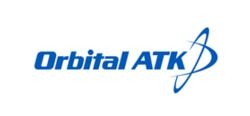Wed, Sep 14, 2016
Next-Generation Joint Polar Satellite System-2 Spacecraft On Schedule For 2020 Delivery
Orbital ATK has successfully completed NOAA’s Joint Polar Satellite System (JPSS) Spacecraft Preliminary Design Review (PDR) for JPSS-2, and the Polar Follow-On/JPSS -3 and -4. Built on Orbital ATK’s proven and reliable LEOStar-3TM platform, these spacecraft will host instruments that provide essential operational space-based weather observations for the National Oceanic and Atmospheric Administration (NOAA).

The four-day spacecraft PDR was conducted August 29 through September 1 at Orbital ATK’s facility in Gilbert, Arizona where the spacecraft are being designed and built. Representatives from NOAA and NASA, including satellite instrument providers and independent reviewers, participated in this important program milestone.
“Our JPSS spacecraft Preliminary Design Review successfully demonstrated that we are meeting all system and schedule requirements,” said Steve Krein, Vice President of Science and Environmental Programs at Orbital ATK. “Our customers are pleased with the spacecraft’s design progress, which allows us to proceed with detailed design and long-lead build schedules in preparation for the Spacecraft Critical Design Review for the JPSS-2 satellite.”
The JPSS-2 satellite will join a constellation of satellites, including the Suomi National Polar-orbiting Partnership and JPSS-1, which gather global measurements of atmospheric, terrestrial and oceanic conditions. During the required seven-year design life, JPSS-2 will deliver observations essential for accurate forecasting up to seven days ahead of severe weather like hurricanes, tornadoes and blizzards. The data collected will also be used to assess environmental hazards such as sea ice, floods, volcanic ash, wild fires and poor air quality. The result is timely and accurate public forecasts that reduce the potential loss of life and property and minimize economic impact.
While Orbital ATK has designed and built a wide variety of innovative Earth science, commercial imaging and defense satellites, the spacecraft for JPSS are the first weather operations spacecraft the company will design and produce. With the spacecraft PDR complete, Orbital ATK is proceeding to the Spacecraft Critical Design Review (CDR), currently scheduled for second quarter CY 2017. Once delivered to the Vandenberg Air Force Base launch site in California, Orbital ATK will support launch and early on-orbit checkout of the satellite.
(Source: Orbital ATK news release)
More News
Aero Linx: Model Aeronautical Association of Australia MAAA clubs are about fun flying, camaraderie and community. For over 75 years, the MAAA has been Australia’s largest fl>[...]
Touchdown Zone Lighting Two rows of transverse light bars located symmetrically about the runway centerline normally at 100 foot intervals. The basic system extends 3,000 feet alon>[...]
“Discovery and innovation are central to our mission at Virgin Galactic. We’re excited to build on our successful record of facilitating scientific experiments in subor>[...]
How To Get A Story On Aero-TV News/Feature Programming How do I submit a story idea or lead to Aero-TV? If you would like to submit a story idea or lead, please contact Jim Campbel>[...]
Student Pilot Reported That During Rotation, “All Of A Sudden The Back Of The Plane Kicked To The Right..." Analysis: The student pilot reported that during rotation, “>[...]
 ANN's Daily Aero-Linx (05.02.24)
ANN's Daily Aero-Linx (05.02.24) ANN's Daily Aero-Term (05.02.24): Touchdown Zone Lighting
ANN's Daily Aero-Term (05.02.24): Touchdown Zone Lighting Aero-News: Quote of the Day (05.02.24)
Aero-News: Quote of the Day (05.02.24) ANN FAQ: Contributing To Aero-TV
ANN FAQ: Contributing To Aero-TV NTSB Final Report: Cirrus Design Corp SR20
NTSB Final Report: Cirrus Design Corp SR20



